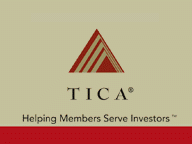What is a 1031 Exchange?
A §1031 tax-deferred exchange preserves equity and may indefinitely defer capital gains taxes, provided you comply with strict IRS guidelines. Four parties are involved:
1. The Exchanger: the party initiating an exchange to defer capital gains taxes on a relinquished property.
2. The Buyer: the party acquiring the Exchanger’s property.
3. The Seller: the party selling a replacement property to the Exchanger.
4. The Qualified Intermediary (Accommodator): the third-party entity holding the Exchanger’s sale proceeds for future disbursement upon the close of the replacement property acquisition.
What is Tenant in Common (also known as Undivided Fractional Interest)?
The purchase of a tenant in common (or undivided fractional interest) structure allows investors to purchase an interest in a significant real estate asset, perhaps larger than they could obtain individually. The investor acquires a percentage ownership (title and deed) and receives passive rental income while receiving the tax benefits of traditional real estate. The investors own and control the properties, not a third party. TIC ownership provides investors with the first ever means for ownership diversity, both in location and type, of their real estate portfolio.
Unlike partnership real estate, TIC ownership entitles each owner to the same ownership rights regardless of the equity invested. This element of the investment structure puts no individual owner (or group of owners) in direct control of the property over any other investor(s). You can truly have all of the ownership benefits and security of a large commercial asset with significantly fewer obstacles. As with any type of investment real estate, the value of a fractional interest typically increases annually due to escalations inherent in most tenant leases.
How Can I Use Tenant in Common to Make an Investment?
Best known for the use of tenant in common structured real estate investments approved for use in §1031 exchanges. Many investors also use these acquisitions for cash and IRA investments. Structuring all offerings with “non-recourse” amortizing debt and passive income makes them ideal for any type of investment. Used as an IRA investment, UFI ownership properties have the same tax treatment (deferred taxation) as any other IRA approved investment.
